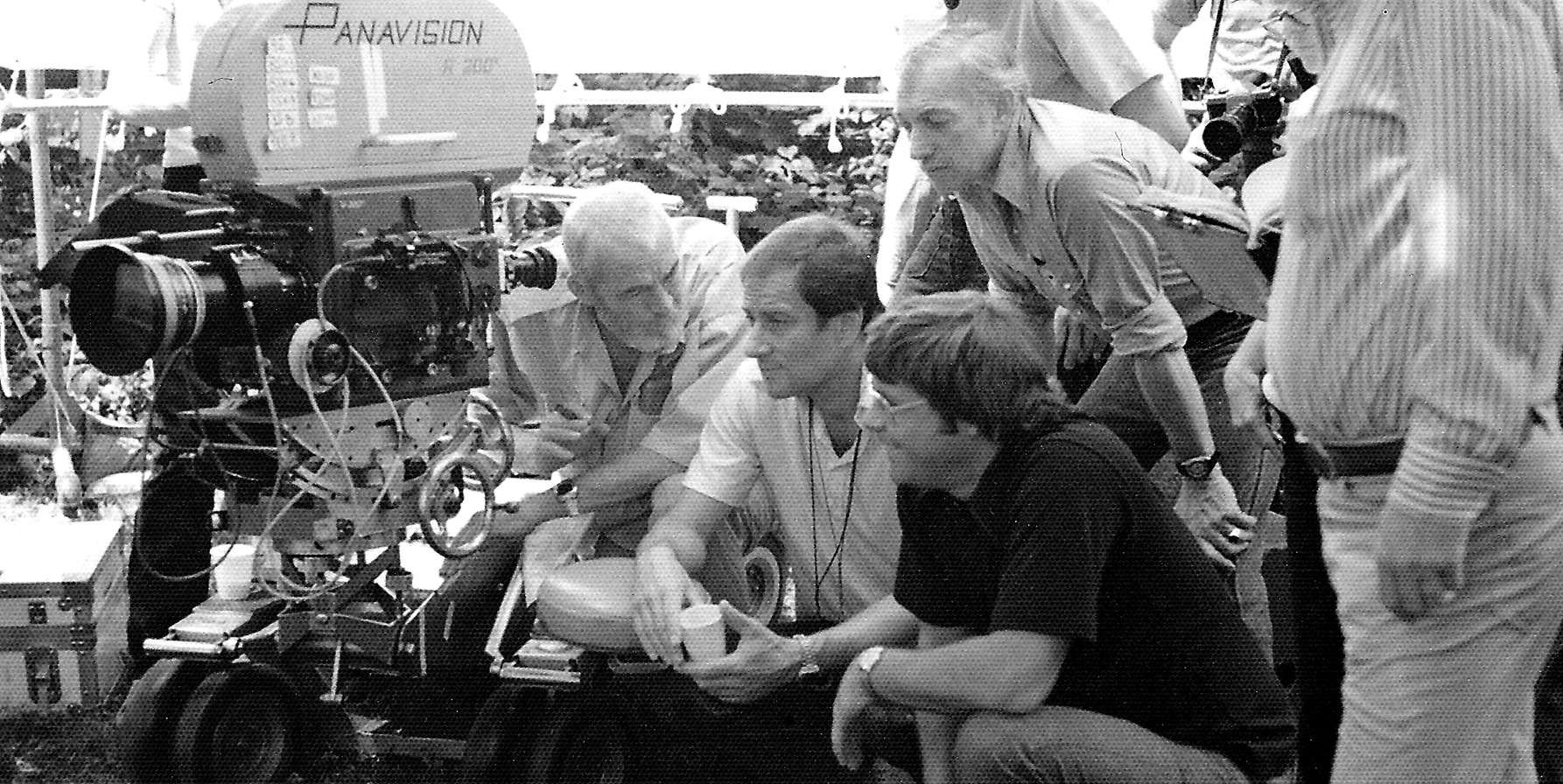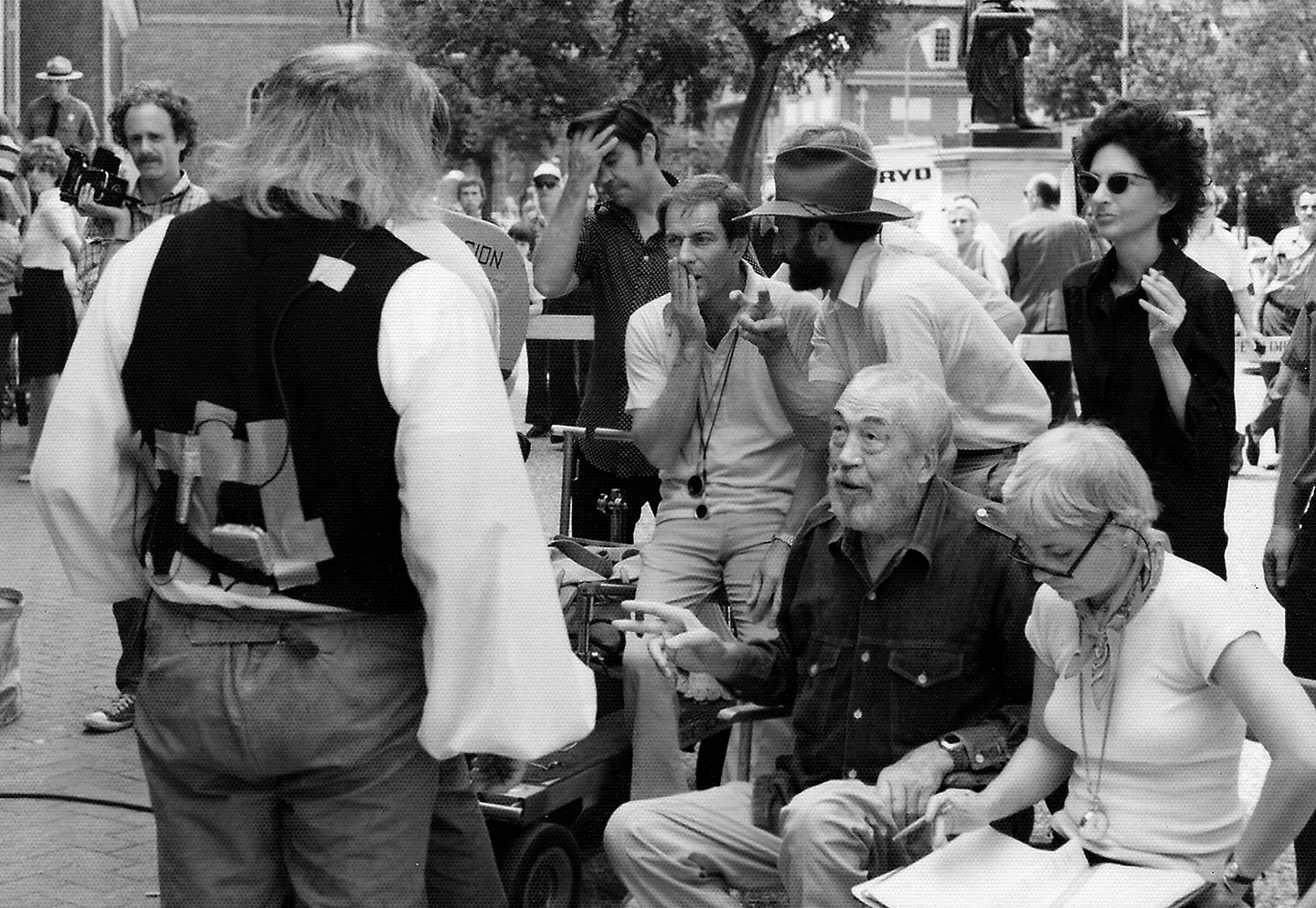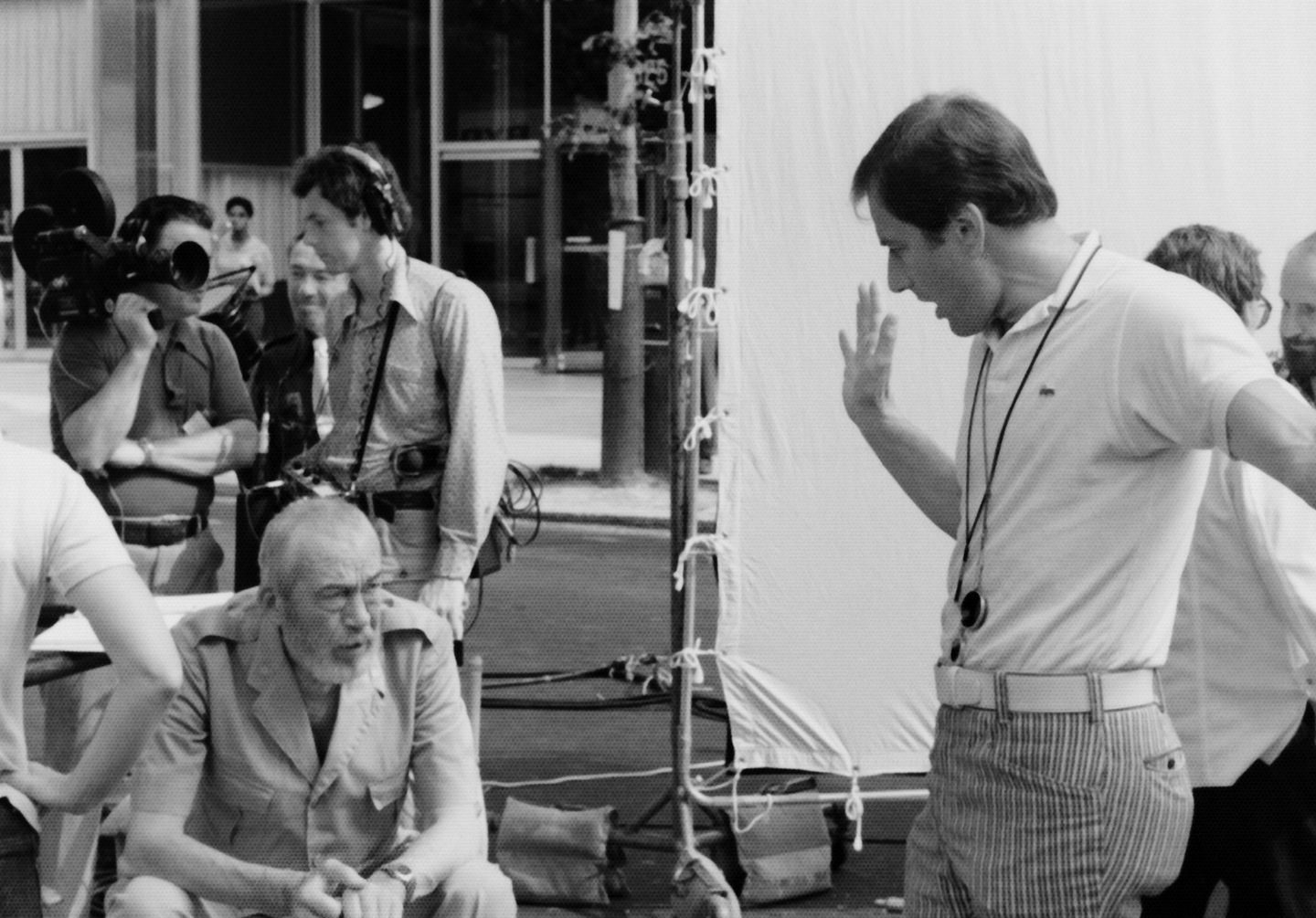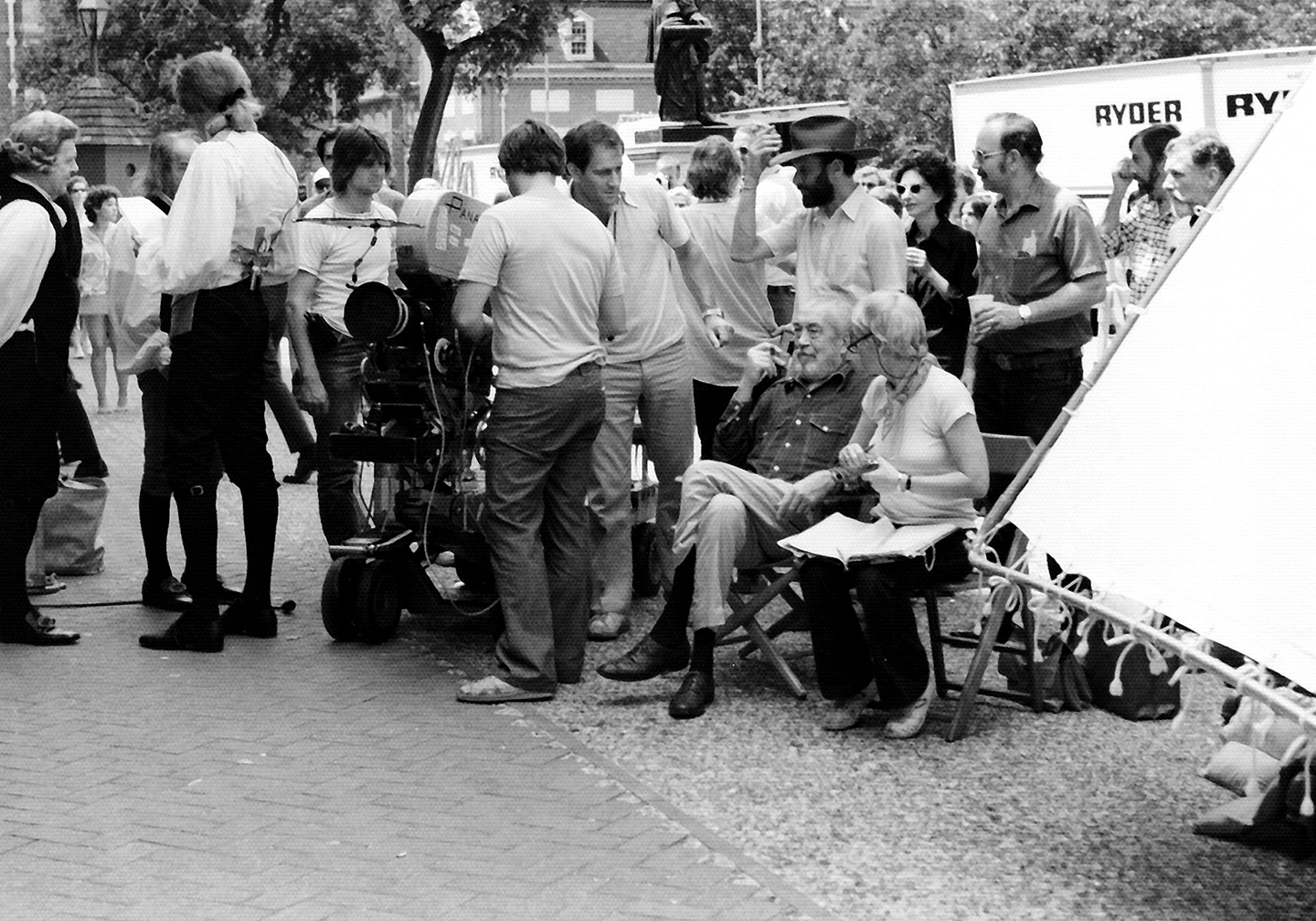
Filming Independence Where It Happened
In this archival article from July of 1976, Owen Roizman, ASC discusses his unique collaboration with director John Huston to tell the story of the founding of the United States of America.
By Owen Roizman, ASC
It was some time last spring that I received a letter from the Department of the Interior and another letter from John Huston asking me to photograph Independence, a half-hour picture to commemorate the American Bicentennial. Everybody engaged for the production would be working for union scale and the aim was to get together a very highly qualified cast and crew. Naturally, I accepted, because I loved the idea of working with Huston (whom I’d never met), plus the fact that I felt it was an opportunity to do something for my country, as we all did.
I met with Huston once and we scouted locations in Philadelphia, mainly around Independence Hall. John said to me: “Come up with some unique photographic style for the picture.”

“So John said to me: ‘Well, come up with something, Owen. See you in the morning.’”
I wracked my brain to try to think of something that would be new and different, but it seemed like everything had been done before. I experimented with different filters to get ghostly effects, because the characters to be represented in the picture — Benjamin Franklin, Thomas Jefferson and George Washington, among others — were to appear somewhat mystically. For this reason, we didn’t want them to look contemporary at all. Keeping that in mind, I made tests and came up with dozens of different things, none of which seemed to be very exciting.
John Huston arrived the night before we were to begin shooting, having been heavily involved in editing The Man Who Would be King, and we had another meeting at which he decided to shoot everything before sun-up or after sundown. When the people from the production department heard that they came apart. Their mouths fell open, and their wallets, as well. A quick meeting was held about the feasibility of doing the project that way and it was decided that it was absolutely not possible financially. So John said to me: “Well, come up with something, Owen. See you in the morning.”
I spent the night thinking about it. The next morning I took a combination of filters I’d experimented with, plus some others, and looked at them by eye. Then, as so often happens on the spot, I made a decision about what to use. I decided on a certain combination of filters which I felt gave us the mystical effect. Then, as we proceeded and saw dailies, I became bolder and went even heavier with the filtration. I finally hit on one combination that through the lens looked like mush. You couldn’t see anything. But on the screen it was just right, so we continued along those lines.

I did vary the filters from scene to scene, depending upon the situation. I used all Harrison filters, starting off with a combination of a #2 Low Contrast and #4 Diffusion. Then, when I wanted to go a little bit softer later on, I went to a #2 Low Contrast plus a #5 Diffusion, but the combination that I used the most throughout the filming consisted of a #2 Low Contrast, a #2 Fog and a #4 Diffusion. While I decided on this combination strictly by eye, I knew what the filters would do because of the tests I’d made up front. These were the ones that pleased me the most.
The filter pack varied somewhat depending upon whether it was a cloudy day or a sunny day, whether we were shooting in backlight or overhead light (which was the case very often, because it was summertime and we had straight-down sunlight) or whether it was an interior and windows were involved or not involved.
We had decided at the start to use smoke outside and for certain scenes inside, as well. Of course, when you work with smoke you have to worry about wind and it seemed that we always had wind. Not only that, but the wind seemed to change directions constantly in the Independence Hall area. We’d have a special effects man with a smoke machine really inundate the background with smoke and just when we were ready to go the wind would come up and blow it right out of the scene. Or he would spot the smoke at a certain distance, figuring that it would blow directly into the shot at the right time. Very often that worked, but sometimes, just as the smoke started to drift into the shot, the wind would blow it out again. Consequently, because it was a low-budget project and we couldn’t wait for the right light or the right density of smoke all the time, we often had to live with what we were able to get. Under such conditions there was inevitably a problem of matching. However, the nature of the piece dictated that matching wasn’t that critical, so we didn’t worry about it that much.

We tried to shoot in overcast light whenever possible. Of course, we didn’t really have a choice, because whatever it was that day, that’s the way we shot. We did try to jockey shots around, so that if we knew it was going to be clearer later in the day, we would shoot a scene out in the open in a certain area, with overcast light, and then move into a shaded area when the sun came out later. But we did have to live with overhead sunlight, which no cinematographer likes because of the harsh shadows. It really didn’t hurt us too much, however, because with the smoke and the heavy filter pack the sunlight took on a beautiful soft quality. We took advantage of it whenever we did it and tried to make those shots very pretty.
Using the smoke inside was interesting. There were some scenes in which we had Venetian blinds and we’d fill the room with smoke to get a very light mist, then blast arcs through the windows to get sharp rays of light. Everybody was thrilled with the effect. We were all having a ball just coming up with whatever we wanted to. It wasn’t as though we had to sustain a great look for a two-hour feature; we had only a half-hour picture, in which each shot could be dynamic in itself. So it was almost like doing a long TV commercial, though in a different way. I had a terrific crew working with me. All of them pitched in and felt like a part of it, and they had a grand old time.

The smoke we used inside was created with bee burners and, of course, we didn’t have the wind problem indoors, so we were able to get a very even light mist. It almost makes the film look a bit grainy, but it still has a richness to it. In one scene where Eli Wallach [playing Benjamin Franklin] comes out of the room, walks through a hallway and up a flight of steps, I went to three different colors of light in the three rooms. I used the same smoke in all three rooms, but lighted each room with a different light source to get a varied color effect. In the room where he walks up the steps, which is the room where the Liberty Bell is usually kept, I used arcs outside the windows to come through with shafts of light to silhouette him. Because of certain logistics, we had to make that shot at night and we had a huge bay window to deal with. All we did was hang two 20’x30’ white scrims on cherry pickers outside the windows, lit them with arcs, and then kept them back from the windows. We then shot between the scrim and the windows to get the shafts of light inside.
That scene came about as the result of John Huston saying to me at about 4 o’clock in the afternoon one day: “I have this idea for a shot.” He described it to me and asked: “Can you do it?”
“A piece of cake,” I said, knowing that it was going to take forever to set up.
“I’ll go back to the hotel,” he said. “Call me when you’re ready.”
We started working on it, broke for dinner, and came back and made the shot after dinner. It was one of those things that was kind of a surprise, but it was a fun challenge for everybody working on it and turned out to be our favorite shot in the picture.
There is quite a bit of camera movement in Independence, because John Huston had said that he wanted to do each sequence in one shot wherever possible, except for the interiors showing the meetings taking place. We did those in a series of cuts, but every other sequence, wherever possible, was done with a combination of dolly and zoom and some kind of movement to give it flow, because the structure of the picture itself doesn’t have much flow.
As far as interior lighting was concerned, we tried to duplicate the lighting that was authentic to the period. For daylight, I attempted to make it look like all the light was coming through the windows. To get this effect I used the old standard Fay lights with soft frosted tracing paper to diffuse them. We shot without 85 gels on the windows and used just an 81EF filter on the lens, as opposed to an 85, because I wanted everything to have a slightly cool look.
For the night interiors, the approach was based on the fact that all they had by way of artificial lighting during that period was candlelight — so all I did was to try to simulate a source of candlelight and I used orange filter on the lamps.
We used all Panavision equipment and shot most of the picture with their 20-120mm lens, which was so sharp that when we did diffuse it we were able to get nice diffusion without deteriorating the image.
Speaking of sharpness, when I was first asked to do the picture by producer Lloyd Ritter, who is also a cameraman, he had already shot some of the second unit footage, using 5247 color negative. Then he asked me to shoot a couple of major scenes with him. Since we hadn’t really determined a photographic style yet, these were shot completely straight 5247.
Then, when John Huston arrived, he said that he wanted the mystical effect. That’s when I went for the heavy filtration and switched over to the 5254 color negative for lower contrast. I felt that it would be better suited to our purpose. Needless to say, the two batches of footage didn’t match at all and when they were intercut in the workprint the effect was very jarring. However, when I saw the final print I was amazed to see that the lab had optically added diffusion to the first material shot and had lowered it’s contrast, so that everything now matched beautifully. I had never seen this done so well before and I learned from it that you can change many things in postproduction, if you want to.
20th Century Fox financed the production of Independence — obviously as the contribution to the American Bicentennial and not as a business venture, because the film will be shown only at Independence Hall in a little theater built just for that purpose. They intend to run it for the next 20 years. I don’t know what the film actual cost, but I feel that for 20th Century Fox to make such a contribution to the country and to the film art medium was quite outstanding.
As I said before, everybody who worked on the project really enjoyed it and it was a pleasure to work with that particular group of people, because each one was an artist in his own right and a fine craftsman. Norman Leigh, my gaffer, had to deal with a great many lights under difficult conditions because of our short shooting schedule. He just never stopped working, but he loved every minute of it and he was terrific.
My key grip, Ken Goss, had to live with all those rigs that we came up with at the last minute, such as 20' x 30' scrims with cherry pickers and arcs off huge parallels. He said that he’d never had so much fun, and he was just great. My assistant, Hank Muller, and operator, Bill Steiner, Jr., had a ball working on the picture.
It was a pleasure to work with Steven Grimes, the production designer, and Gene Rudolph and Joe Caraciola, who did all the prop work and smoke effects. The people from the production department, Pat Casey and Sol Fol, had a very difficult assignment and did a terrific job, as did Biff Johnson, the associate producer.
I’d like to thank Lloyd and Joyce Ritter, the producer and writer, respectively, for asking me to do the picture in the first place, because it was so much fun to do.
Working with John Huston was one of the great thrills of my life, because he is such a great man and he commands so much respect from everybody around him. I’ve heard many people refer to him as “The Great Mesmerizer.”
I know now what they mean.
For more than four decades, this 30-minute film screened 12 times a day at the Independence National Historical Park in Philadelphia, Pennsylvania, which is visited by almost three million tourists every year.
During its production, Huston noted, “All films are created equal. I don’t think there is such a thing as a small film. We’re not pulling any punches here. Scene for scene, everything is being done to the best of our abilities. Each scene as we make it is the best scene I’ve ever made — in my imagination.”
Here the completed project:
If you enjoy archival and retrospective articles on classic and influential films, you'll find more AC historical coverage here.






